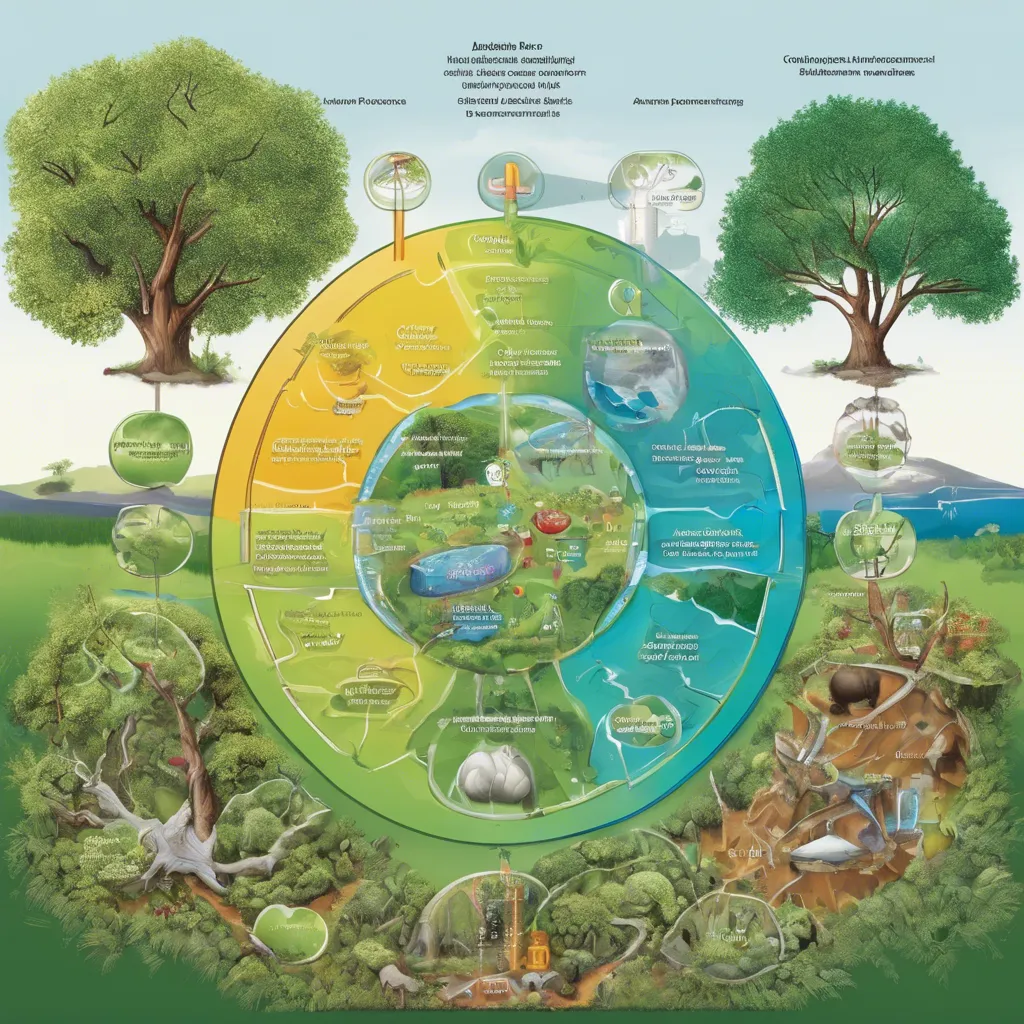Table of contents
- The Impact of Environmental Factors on Diabetes
- Taking Control: Lifestyle Changes to Minimize Environmental Influence
- The Importance of a Balanced Diet for Diabetes Prevention
- Eco-friendly tips for managing diabetes from experts
Diabetes, a chronic condition affecting millions worldwide, has long been thought to be primarily influenced by genetic and lifestyle factors. However, emerging research suggests that environmental factors may also play a significant role in its development. In this article, we will explore the intricate connection between diabetes and various environmental factors, shedding light on the potential risks and offering insights into prevention and management strategies.
The Impact of Environmental Factors on Diabetes
Air pollution has been identified as a significant environmental factor that increases the risk of diabetes. Exposure to pollutants like fine particulate matter and nitrogen dioxide has been linked to insulin resistance, impaired glucose metabolism, and inflammation, all of which are key contributors to diabetes development. These pollutants are commonly found in traffic exhaust, industrial emissions, and household combustion. The detrimental effects of air pollution on diabetes risk are particularly concerning in urban areas with high pollution levels. Efforts to mitigate air pollution and promote clean air are crucial to reducing diabetes prevalence and improving public health.
Taking Control: Lifestyle Changes to Minimize Environmental Influence
Regular exercise plays a pivotal role in reducing the risk of diabetes. By engaging in physical activity, the body becomes more efficient at utilizing insulin and controlling blood sugar levels. Exercise also aids in maintaining a healthy weight, which is crucial for diabetes prevention. Moreover, it helps improve heart health, blood circulation, and overall well-being. Incorporating regular exercise into one's daily routine can significantly minimize the risk of developing diabetes and its associated complications, making it an essential lifestyle change in minimizing environmental influence on health.
The Importance of a Balanced Diet for Diabetes Prevention
Maintaining a balanced diet is crucial for managing and preventing diabetes. One approach that has gained popularity is a low sugar and low glycemic index diet. By understanding the benefits of this diet, individuals can make informed choices about their food intake and improve their overall health.
-
Stabilizes blood sugar levels
A low sugar and low glycemic index diet focuses on consuming foods that have a minimal impact on blood sugar levels. By avoiding high sugar and high glycemic index foods, individuals can stabilize their blood sugar levels throughout the day. This helps in preventing blood sugar spikes and crashes, reducing the risk of developing diabetes and managing existing diabetes.
-
Promotes weight management
A low sugar and low glycemic index diet can be beneficial for weight management. Foods with high sugar content often lead to weight gain, while those with low glycemic index promote a feeling of fullness and control cravings. By choosing low sugar and low glycemic index foods, individuals can maintain a healthy weight, reducing the risk of obesity, which is a significant risk factor for diabetes.
-
Improves cardiovascular health
Adopting a low sugar and low glycemic index diet can have a positive impact on cardiovascular health. High sugar intake is associated with an increased risk of heart disease, while low glycemic index foods are known to improve cholesterol levels and lower the risk of heart problems. Choosing foods with lower sugar content and a low glycemic index can protect against cardiovascular diseases.
-
Increases energy levels
A low sugar and low glycemic index diet provides a steady and sustained release of energy throughout the day. By avoiding foods that cause a quick spike and subsequent crash in blood sugar levels, individuals can experience improved energy levels and avoid feeling fatigued. Stable blood sugar levels contribute to increased productivity and mental alertness.
-
Enhances overall well-being
Following a low sugar and low glycemic index diet can have numerous benefits for overall well-being. By consuming nutrient-rich, whole foods and minimizing sugar intake, individuals can provide their bodies with essential vitamins, minerals, and antioxidants. This promotes better immune function, supports healthy skin, improves digestion, and reduces the risk of chronic diseases.
Eco-friendly tips for managing diabetes from experts
Managing diabetes in an eco-friendly way is not only beneficial for the environment but also for our health. Experts recommend adopting eco-friendly practices such as using reusable insulin pen needles, opting for plant-based diets, and choosing biodegradable glucose test strips. In addition, they suggest reducing waste by purchasing medications in bulk and recycling diabetes-related waste properly. By incorporating these eco-friendly tips into our diabetes management routine, we can contribute to a healthier planet while taking care of our own well-being.
In conclusion, the link between diabetes and environmental factors is a complex one. Various studies have shown that exposure to certain chemicals and pollutants, such as air pollution and pesticides, can increase the risk of developing type 2 diabetes. Additionally, lifestyle factors such as diet and physical activity also play a crucial role in the development and management of the disease. However, further research is needed to fully understand the mechanisms through which these environmental factors affect diabetes risk. Nevertheless, recognizing the impact of our surroundings on health is important in order to implement effective preventive strategies and improve overall public health.
Frequently asked questions related to diabetes risk factors
What are some environmental factors that can contribute to diabetes?
Some environmental factors that can contribute to diabetes include air pollution, chemical exposures, poor nutrition, and lack of physical activity.
How does lack of physical activity contribute to diabetes?
A sedentary lifestyle and lack of physical activity can increase the risk of obesity, which is a major risk factor for type 2 diabetes. Regular exercise helps improve insulin sensitivity and overall metabolic health.
How does air pollution affect the risk of developing diabetes?
Air pollution, particularly fine particulate matter, can increase the risk of developing diabetes by causing inflammation, insulin resistance, and oxidative stress in the body.
Is there a connection between poor nutrition and diabetes?
Yes, poor nutrition, including a diet high in processed foods, sugary beverages, and unhealthy fats, is a major risk factor for developing type 2 diabetes. A healthy diet with balanced nutrients is essential for preventing and managing diabetes.
Can chemical exposures increase the risk of diabetes?
Yes, certain chemicals found in everyday products such as pesticides, plastics, and flame retardants have been linked to an increased risk of diabetes. These chemicals can disrupt hormone regulation and lead to insulin resistance.
Are there other environmental factors that play a role in diabetes?
Yes, other environmental factors that may contribute to diabetes include exposure to heavy metals, certain medications, and certain viruses or infections. However, more research is needed to fully understand these associations.







